GM70 amplifier -
Tango or Bartolucci
April 19 st , 2009
BEWARE! This is
an expert-only project because the high power supply voltage, about 1KV. Be
careful, it can kill you!
Keep always one hand (better if it is the left hand) behind your back.
INTRODUCTION
After a first series of listen test
with some my friends I can assert: the GM70
copper plate is valid like the 845.
Sure I have tested also the normal GM70 graphite but in
this case the sound is a little bit metallic and not very pleasant near to the
same result get using the Svetlana SV811-3 and the SV572-3.
The main advantages of the GM70 is the higher amplification factor (8 instead of 5).
Using the 845 it is necessary use a strong driver stage
with a very high voltage amplification, low output impedance and it should be able to supply
a high current.
In the case of 845 more than two stages are necessary to get a good result because
medium power tubes have low amplification factor.
Another tube easy to driver like the GM70 is the 211 but it have a high plate
resistance so it is necessary use very high impedance transformers near to
20Kohm to get a good damping factor.
To create a GM70 amplifier with enough sensibility to be driver directly by a CD
player or a phono preamplifier it is necessary have a driver stage with a
voltage gain about 50x or 70x.
Using the pentode
D3a
it is possible build a pure single ended two stages amplifier because it have high gain and low
internal resistance.
The D3a it is easy
to find on the market and the performances in triode connection are fantastic.
In my PF2007,
in my new cheap
2A3 PSE and in
my new
headphone amplifier it is possible see some measurements results.
The D3A is a Siemens product and I consider good only the Jan Philips,
Siemens, GE and Mullard low power vacuum tubes because these give a very neutral
sound (only the Mullard is a little bit smooth if compared to the others).
These same vacuum tubes brands are used in the
Audionote kits and in their Hi-end
products.
In this amplifier it is possible use the Russian 6C45 (instead of D3a) without many changes (disconnect only 2
pin on the socket) but in this case will be necessary 1.5Vrms in input (instead
of 1Vrms) to drive this amplifier and we must limit the power supply voltage.
To use the 6C45 it is necessary limit the power supply voltage of the driver
reducing the relative secondary of the transformer because this tube have a max
anode voltage of 150V.
This driver stage use a cathode bias so it is necessary a very good audio
capacitor in parallel to the cathode resistor 100ohm.
The value of this capacitor is the result of many test because its influences
the low frequency response (lower value can create a positive peak in the low
frequency area for a resonance).
I have used 3 x 220uF 6.3v
Sanyo OS-Con in parallel to have the 660uF value but you can insert a single
680uF.
A valid alternative to the OS-Con are the old
Black-Gate
N/NX/STD or new
ELNA Silmic II.
The best choice in a two stage amplifier is use an interstage transformer
for these reasons:
- minimize the
distortion because the vacuum tube is not loaded by the resistor
- prevent any
possible alteration of the sound because any capacitor insert
a sonic characteristic
- maximum
current transfer because all the bias voltage can be used to drive
the final stage
In all my projects I prefer to limit the power but get a lower distortion and
lower output impedance so in this project I have chosen a 10Kohm load for
the GM70.
This amplifier have enough power (about 20w) and low output impedance (near to
1ohm) to drive any kind of loudspeakers like full range, low efficiency
with 2 or 3 ways and also any electrostatic.
The max power of 18w is the measurement result increasing the output level until
the distortion spectrum decay is perfect but will be supported larger
peaks in less linear area.
I suggest this project only to person with some experience with vacuum tubes
amplifier because it use very high voltage so it is necessary be care and use
only good wire for the internal cabling.
A very good quality stranded tinned copper
wire could be buy directly from
E-Z-HOOK
that carries an extensive line of fine stranded and extra flexible wire.
I have used the model 9506 with WVDC (Working Voltage Direct Current ) of 5000V
for all the main power supply connections, the model 9501 for the input signal
and the model 9505 for the medium voltage.
All the wires near the tube socket have been cover by Sterling tubes in order to
avoid that the high temperature will destroy them.
The two power supply transformers should be custom made and these could be
toroidal, double c-core or r-core type but in any case it is very important to
keep the flux low, 20% less than normal (14000 instead of 17000) and 2
mm˛
per ampere.
It is possible use vacuum tube rectifiers but I am
not sure these are better because increasing the resistor after the diodes
bridge it is possible get a similar result (a little bit smooth sound).
There are many configurations possible for the high voltage power supply (see
some examples) including the
Hybrid Graetz Bridge concept
after a Fulvio Chiappetta paper published by the Italian Magazine.
He tested and
comparated this topology versus a pure tube vacuum state power supply design
with a 300B output tube amplifier and there was no difference both while
listening and measuring the output noise spectrum.
Using vacuum tube rectifiers
it is necessary decrease the input capacitors (after diodes) to decrease the
current peak so I suggest to use 3 x 100uF instead of 3 x 220uF.
If you think to try vacuum tube rectifiers in the
future remember to add a pair of secondaries at 50v and 100v to add in series to
the 900v to compensate the voltage lost on the tube rectifiers.
In the 845 amplifiers it is possible use ac filaments reducing the noise with
simple 100ohm 3w trimmer and dc filaments are necessary only with if you have very
high efficiency loudspeakers (about 100db).
The GM70 require dc filaments with any kind of loudspeakers due to the higher
amplification factor and the trimmer are useless.
Any amplifiers with dc filaments should use a separated transformer for the
filaments because using a single transformer the noise generated by the
rectification process in input capacitor power supply is amplified to the anodic
secondaries.
I have used the free software
PSU Designer II to
simulate the dc filaments power supply to check two different choke:
In the first case
we get 45mVpp of noise and in the second case
with 0.1H we have 5mVpp.
It is possible calculate the max output noise generated by this filament power
supply with: 0.045 * 8 / sqrt(10000 / 8) = 11mVpp (-48dB)
The anodic power supply simulated give a
ripple of 80mVpp so on output: 0.080 / sqrt(10000 / 8) = 2.3mVpp (-62dB)
Using high efficiency loudspeakers near to 100dB could be necessary use the 0.1H
but in the most of conditions the 10mH will be enough.
In the first measurements I have used ac filaments and it is visible the high
100Hz noise near to -25db but using the dc filaments show in the power supply
schematic the noise at 100Hz is reduced to -57dB (see
here the difference), so this result is better than calculation probably
because I have connected the dc with the virtual center tap.
As show in the simulation could be necessary add a 20w resistor (0.22-0.47ohm)
before the input capacitor 10000uF to adjust the dc output value to 20v.
To get some contribution
and to promote this design I have an
opened forum about this GM70 amplifier.
TUBES
 |
GM70 specifications:
filament
voltage: 20V
filament current: 3A
max plate
voltage: 1.5kV
long-dissipated anode power: 125W
max minute-dissipated anode power: 150W
Interelectrode capacity:
grid-anode 12pF
grid-cathode 8pF
anode-cathode 4pF
height 185mm,
diameter 68mm
-
Plate resistance calculation 2300ohm
-
Amplification factor 8x
-
Amplification factor on 10Kohm load
6.7
To create a valid GM70 socket it is possible
convert a 813 ceramic socket increasing the size of only one pin.
Follows the photo of the common vacuum tubes
used like driver in power amplifier. |
 |
Many of these tubes have a plate resistance about 2Kohm but only the D3A
and 6C45 have an amplification factor greater than 50.
D3A specifications in triode
connection:
filament
voltage: 6.3V
filament current: 315mA
Max plate voltage: 200v
Max plate dissipation: 4.2w
Max cathode current: 33mA
Plate resistance: 1.9Kohm
Amplification factor: : 77
Max resistance in grid circuit:
0.5Mohm
|
6C45 specifications:
filament
voltage: 6.3V
filament current: 440mA
Max plate voltage: 150v
<<<<< it is lower than D3a
Max plate dissipation: 7.8w
Max cathode current: 52mA
Plate resistance: 1.2Kohm
Amplification factor: 52 ±16
<<<<<
selection is necessary
Max resistance in grid circuit:
0.15Mohm
Inter electrode capacitance:
input: 11±2 pF
output: 1.9±0.3 pF
transfer: 4.5pF
|
Follows the operating point choiced for the first test.

TRANSFORMES
Follows the comparison test using all Tango, all
Bartolucci and a mix
I will start soon a valid sonic
performance test with some friends but as first impression the all Tango
combination seem to be
very smooth and the Bartolucci are more neutral with more details.
 |
Bartolucci
INT8C
Turn ratio: 1:1
Lprim. =
48H
DC=25-30mA
Size: 110 x 110 x 125 mm
115BN
Turn ratio: 11K5 / 8ohm
DC=90mA
Size: 135 x 135 x 135 mm
|
|
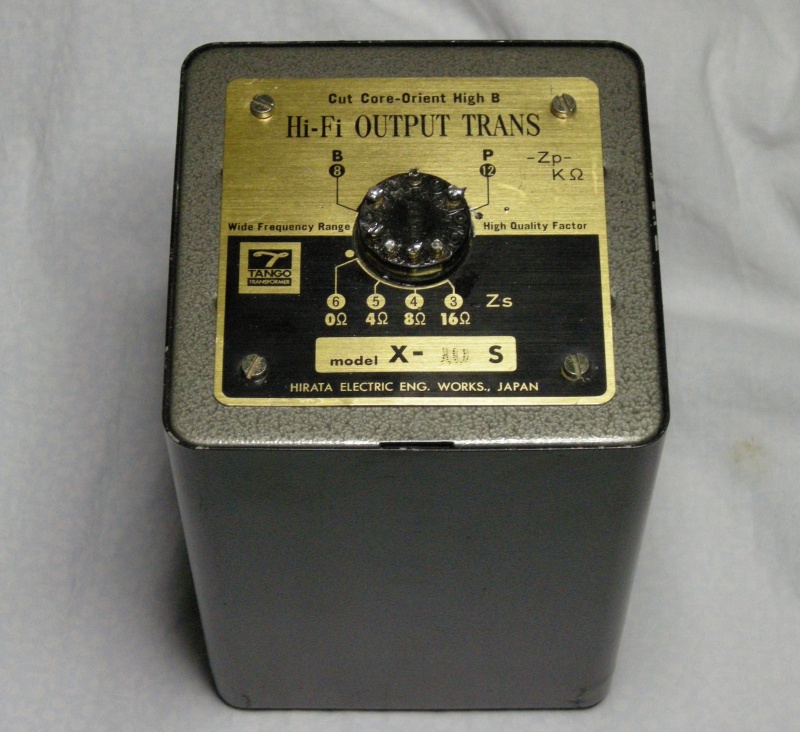
 |
Tango
X-10S
Turn ratio: 10K / 4,8,16ohm
DC = 70mA
NC-20F
Turn ratio: 1:1
Inductance: 70H at 20mA
DC = 30mA
Rprim. = 410ohm
Rsec. = 410ohm
Size: 83 x 78 x 104 mm
Weight: 1.9Kg |
The price for the
2 x
Tango NC20F is $800 and for 2 x Tango X-10S is $1500 so the total for two
channel is about 2300$.
The price for 2 x INT8C + 2 x 115BN is about 900 euro + tax 20% for this version
without pins.
The common environment is:
- D3A in triode connection with
18-20mA bias at 170-180v
- GM70 Copper with 80mA 1100v
- input 0.972Vrms
- output about 18Wrms on 8ohm load
ALL TANGO

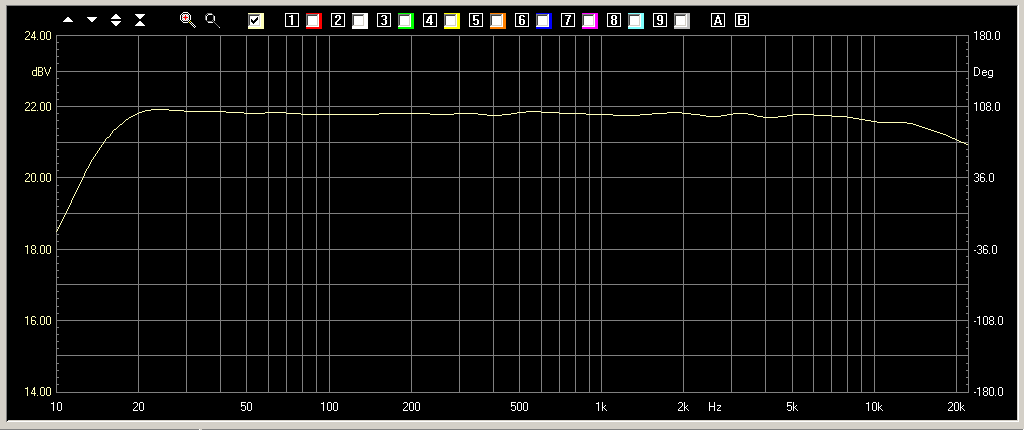
ALL BARTOLUCCI


MIX TANGO-BARTOLUCCI
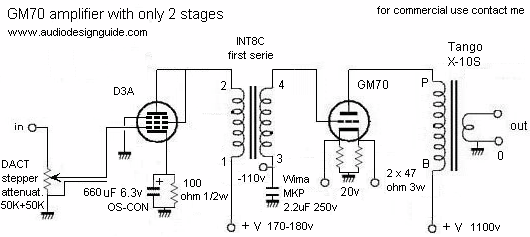
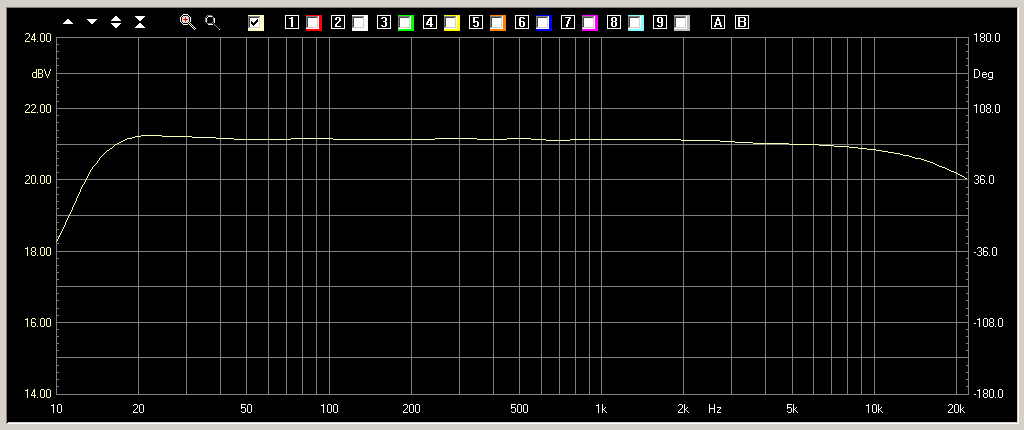
POWER SUPPLY
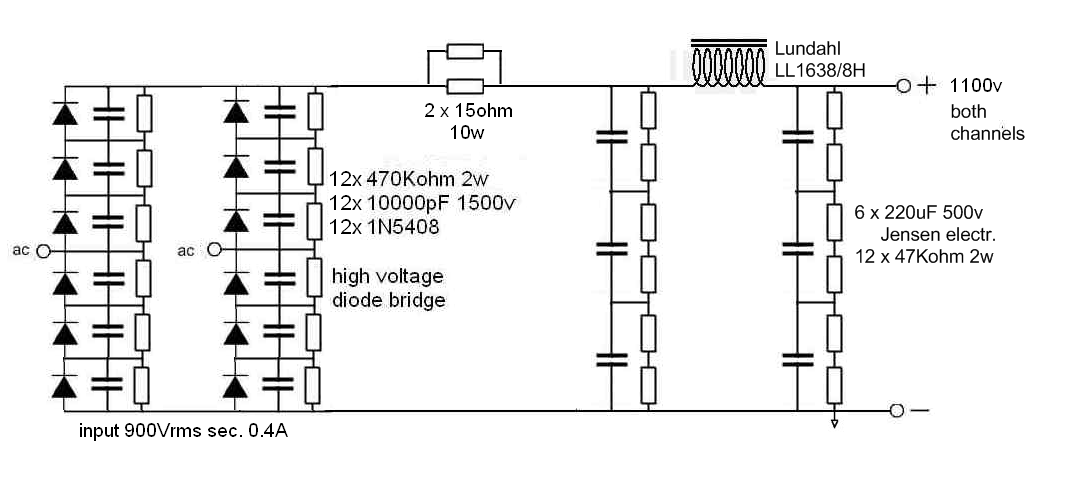
With the GM70 I suggest dc filaments to skip 50Hz noise (all the previous
measurements are with ac filaments).
For the D3A it is possible use ac filaments.

MATERIAL SOURCES
PHOTOS
I have used 3 diodes in serie to create the high voltage diode bridge (3000V).

Soft start board

Bias board (low power trimmer not used)

CHASSIE




















